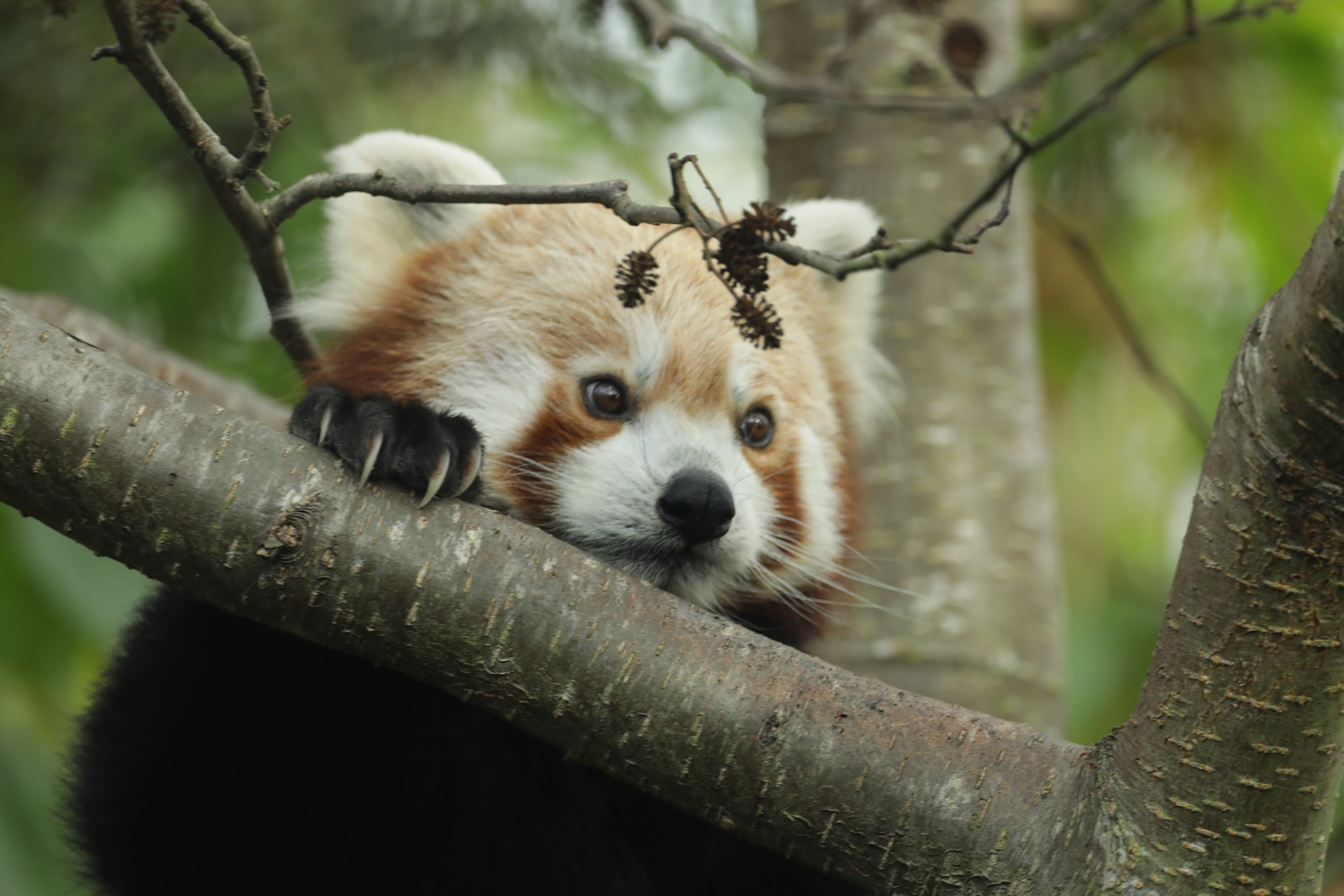Autumn 2025: ICAS animal update
Posted 12 Nov 2025
/checking-camera-traps-pantanal-icas-2025.jpg)
Our charity has worked with Dr Arnaud Desbiez and his team at the Wildlife Conservation Institute (ICAS) in Brazil for over a decade to safeguard threatened giant anteaters, giant armadillos and their rapidly disappearing habitat. This team has made incredible strides in making habitats and roads safer for giant anteaters, and discovered nearly everything that is currently known about giant armadillos.
Arnaud recently updated us on what’s been happening with the animals we are working to conserve in the past few months.
Like most of you, I find it hard to believe Jane Goodall is gone. I have admired her for as long as I can remember. Her life certainly proved that one person can make a huge impact on the world. I never had the opportunity to meet her in person but have read her books and seen so many of her interviews and talks.
Somehow the updates I send out made their way to her and we started corresponding. Occasionally, I would get the kindest, loveliest email from her encouraging and congratulating us on our work. The came at the end of August.
I will start this update with a quote from Jane Goodall:
“I like to envision the whole world as a jigsaw puzzle… If you look at the whole picture it is overwhelming and terrifying, but if you work on your little part of the jigsaw and know that people all over the world are working on their little bits, that’s what will give you hope.”
And so, on that note, let me tell you a bit about our little piece of the jigsaw puzzle.
Giant armadillos in the Pantanal
Field work in the Pantanal continues. We’ve been working at Baía das Pedras studying giant armadillos for over 15 years now! We currently monitor three adult females and two adult males.
Stacy, an adult female giant armadillo, was finally located after eight months. Her area had become inaccessible due to flooding. She will be recaptured in October. Carlos, a giant armadillo male, had disappeared for the past five months. Despite our best efforts, he was nowhere to be found.
/recapture-carlo-giant%20armadillo-icas-2025.jpg)
We finally found him 6km away from his last location and 11km from where he was first found. Male giant armadillos have huge home ranges that can reach over 50 km2. It’s so much hard work studying them. He has since been fitted with a GPS tag.
Capacity building continues in the Pantanal with three international (Argentina, Paraguay and USA) and three Brazilian national future conservationists trained in the past few months.
/giant-anteater-pup-icas-2025.jpg)
Update on some giant anteaters
I am relieved to let you know that Kate the anteater is doing well and seems to have settled into her new home range. Quick reminder, Kate is an anteater born in one of our study areas that eventually dispersed but established herself near a dangerous highway. We translocated her twice back to where she was born, but it was only when we translocated her to a new safe area, far from her birthplace, that she settled down.
Sadly, I must report that Tika, one of the juveniles, was preyed upon. We suspect a puma was responsible due to the way the carcass was left after consumption.
Finally, Sonny the anteater in Peru has dispersed from her release enclosure. However, due to the dense foliage of the Amazon, we are having a really hard time getting satellite locations, making monitoring much more challenging.
Giant armadillos, eucalyptus companies and beekeepers
You may remember that we are using camera traps and GPS tags, we hope to understand how giant armadillos use or avoid eucalyptus plantations, and how areas can be set aside to maintain connected populations.
We have renewed our partnership with the eucalyptus company Suzano for another year. We’ve just shared our preliminary results in a report in August.
/eucalyptus-plantation-icas-2025.jpg)
Two giant armadillo females were captured and fitted with GPS units in an area that can be described as a mosaic of native habitat and eucalyptus plantations.
While one of the units seems to have malfunctioned or may have fallen into a stream, preliminary results from another GPS unit appears to show that the animal neither selected nor avoided the plantations while choosing native habitat. This may indicate that the habitat is permeable to the species and does not act as a barrier. Movement of animals captured in the Pombo Park, which has no eucalyptus and only native habitat, will be used in the future for comparative purposes.
As for the work with beekeepers, we prepared a detailed report describing some of the challenges for beekeepers placing their hives in the protected areas of the company and drafted a list of solutions. Next, we will seek to implement these solutions with the permission of the company.
I hope you have enjoyed our little piece of the jigsaw puzzle. I know that all of you in your own ways are working on your parts and that does fill me with hope. Once again, we could never do any of this without your long-term support, and I am grateful beyond words.

